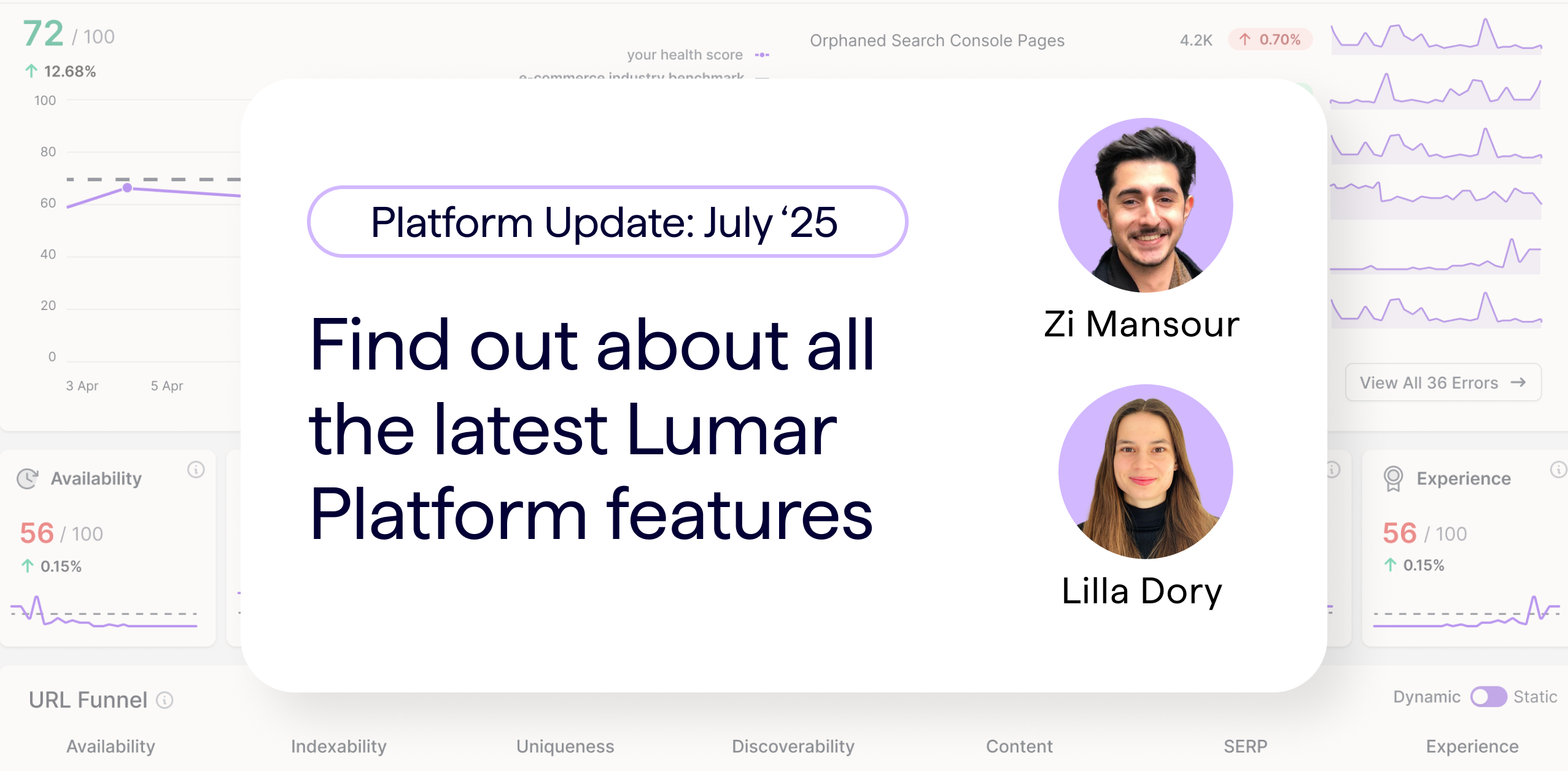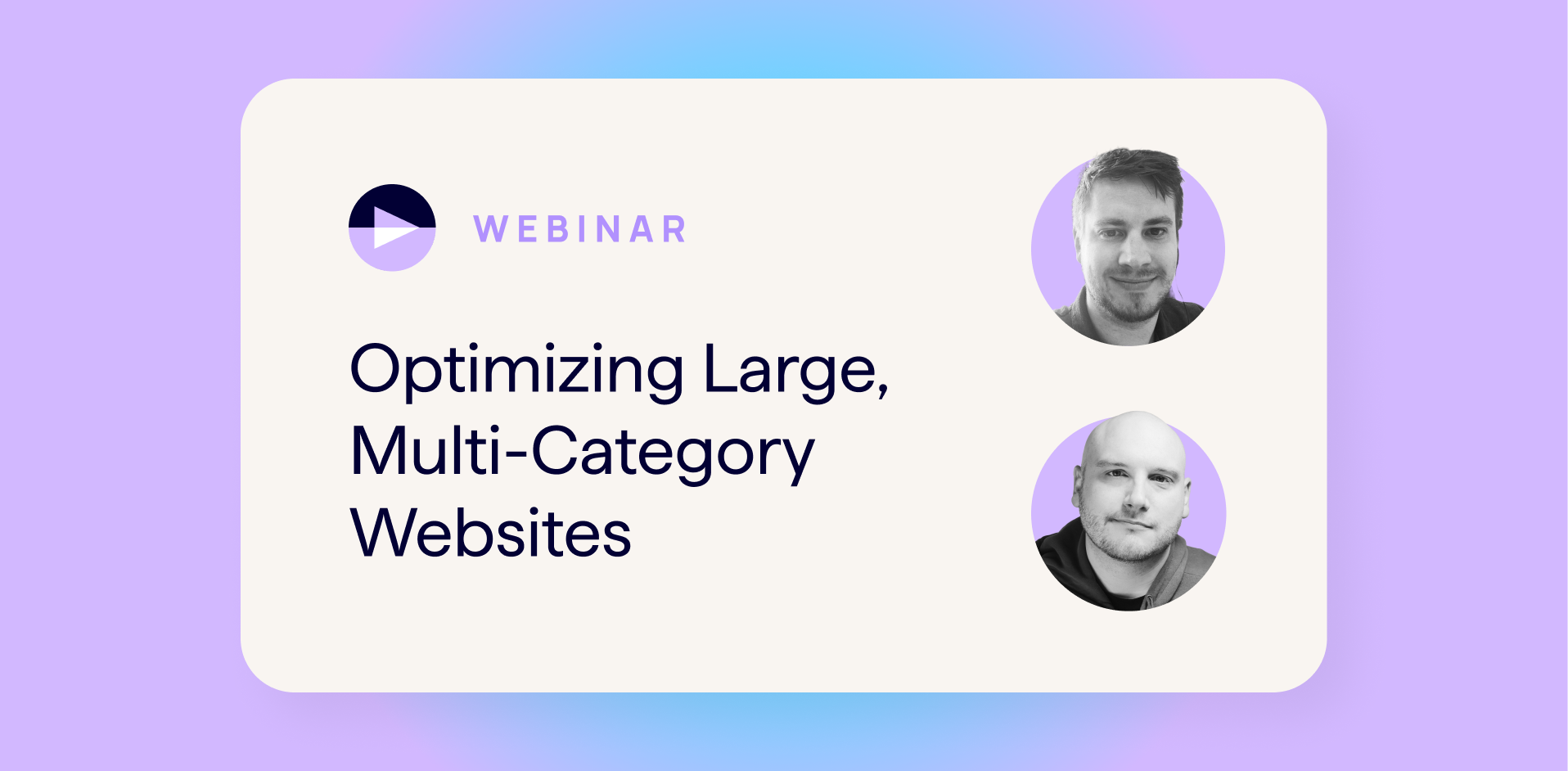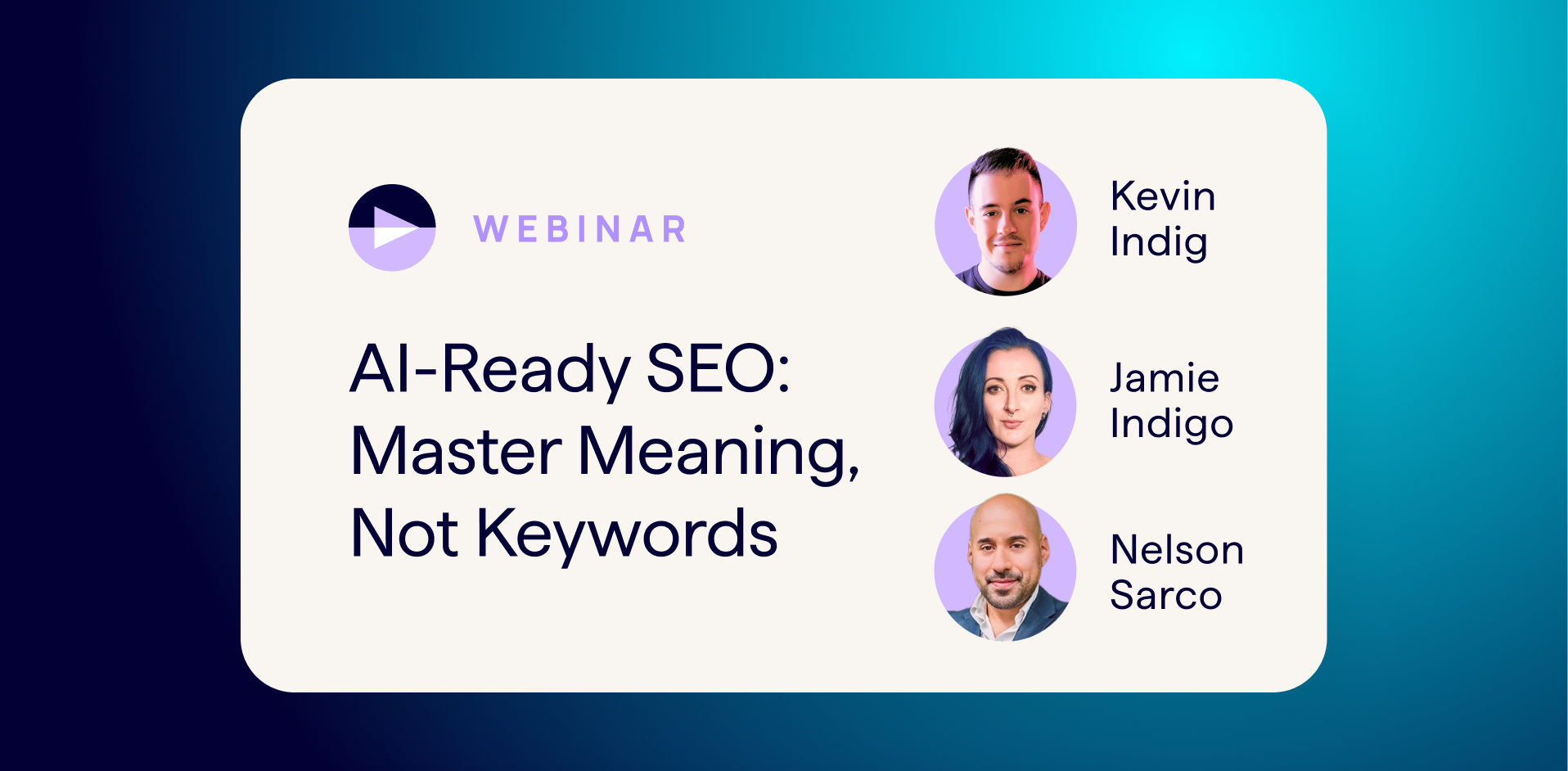Is your website compliant with current (and upcoming) accessibility guidelines for your region? If not… what do you need to do to start ensuring your website is accessible, inclusive, and compliant?
On Global Accessibility Awareness Day (GAAD), Lumar hosted accessibility advocate and SEO specialist Billie Geena Hyde of Uptake Agency and accessibility consultant Carter Temm of QualityLogic alongside Lumar solutions engineer Matt Hill for this deep dive into how to address current — and upcoming — website accessibility requirements.
In this digital accessibility-focused webinar session, we cover:
- Recent (& upcoming) changes to web accessibility rules in the US, Canada, Europe, and beyond — and which organizations these regulations apply to.
- How people with accessibility requirements access and use the web.
- How to start improving your website’s accessibility — key technical and content considerations.
Watch the full session on-demand above, or read on for our top take-aways.
The website accessibility compliance landscape
According to QualityLogic’s Carter Temm, while the web accessibility compliance landscape may differ from country to country, the best practices are fairly universal:
- Adherence to accessibility standards is now required for most organizations.
- Most digital accessibility laws rely on the Web Content Accessibility Guidelines (WCAG) — start there.
- Failure to comply with your local web accessibility regulations may invite legal issues for your business, can jeopardize SEO, and will exclude users from properly engaging with your content.
Drilling down into web accessibility compliance region-to-region, Temm first points to European regulations.
Web accessibility regulations in Europe
There are two key bits of legislation to consider for businesses and organizations operating in the EU:
- The European Accessibility Act (EAA) – Enforcement will begin in 2025
- The EU Web Accessibility Directive – Adopted in 2016
The European Accessibility Act
The European Accessibility Act (EAA) was introduced in 2019 and impacts all organizations serving EU countries — whether or not the company is based in Europe. The goal of the EAA is to make digital products/services accessible to all EU residents. The EAA will rely on EU member states to govern these standards and each EU country must enact their EAA laws by June 2025.
“Penalties can range from small fees to even jail time in places like Ireland,” explains Temm.
“If you operate in the EU and you haven’t considered [the EAA] yet, we highly recommend you do so, as 2025 is going to see each of the member states enacting those laws.”
The EU Web Accessibility Directive
Public sector organizations in Europe are also subject to the EU Web Accessibility Directive, dating back to 2016. This applies to both government entities and anyone who does business or contracts with them. The goal here is likewise to ensure that public sector websites are usable by all EU residents.
“It requires [public sector organizations] to create a feedback form so if anyone has issues accessing the [website’s] content with their assistive technologies … they have a feedback form that’s extremely easy to use and they can work with customer service and developers to make sure those issues are resolved,” Temm says, “And regulatory authorities are also going to be periodically monitoring all of the sites that fall under this umbrella as a further means of enforcement.”
Web accessibility regulations in the United Kingdom
The UK Equality Act
Those in the United Kingdom have other digital accessibility legislation to consider as well.
Of course, those operating in the UK have other legislation to consider. Firstly there is the UK’s Equality Act of 2010 that has now been in place for well over a decade.
The UK Equality Act has a wide scope to prohibit discrimination more broadly, but it explicitly mentions websites and mobile apps as part of the regulations. It applies to both public sector organizations as well as to organizations that service the public sector.
One example of the website requirements for public sector organizations under the Equality Act is the need for pages announcing job vacancies on the organizations’ sites to be checked for accessibility to ensure disabled people using assistive technologies can access these job postings.
The UK Public Sector Bodies Accessibility Regulations
Additionally, the UK’s Public Sector Bodies (Website and Mobile Applications) Accessibility Regulations were also established back in 2018 to codify adherence to WCAG 2.1 AA standards (and WCAG 2.2 standards starting in October 2024).
Web accessibility regulations in the US
The Americans with Disabilities Act (ADA)
Organizations and businesses in the United States are subject to the Americans With Disabilities Act (ADA), initially established back in 1990 to prohibit discrimination more broadly. However, in 2022, the Department of Justice (DOJ) clarified that the ADA also applies to websites and mobile apps.
In April 2024, the US Justice Department made it explicit that under Title II of the ADA state and local governments are also required to meet the “AA”-level website accessibility standards set out in WCAG 2.1.
“This final rule marks the Justice Department’s latest effort to ensure that no person is denied access to government services, programs, or activities because of a disability,” said Attorney General Merrick B. Garland in the DOJ press release issued last month.
There are also various state-level accessibility regulations your organization may need to consider, each with its own deadlines and requirements. Two examples of state-level accessibility requirements include: Colorado’s HB21-1110 law and the Illinois Information Technology Accessibility Act (IITAA).
Web accessibility regulations in Canada
The Accessible Canada Act (ACA)
Likewise, Canada is subject to both federal and provincial digital accessibility laws. The Accessible Canada Act was adopted in 2019 and outlines processes to remove and prevent accessibility barriers with gradual enforcement deadlines for public and private sector organizations. According to the Canadian Human Rights Commission’s website, the goal of the ACA is to create “a Canada without barriers” by 2040.
The Accessible Canada Act applies to government organizations and federally regulated private organizations with 10 or more employees.
As part of the ACA, accessibility plans from small federally regulated businesses are due in June 2024. Larger businesses with 100+ employees were required to prepare and publish their first accessibility plans last year.
Additional accessibility laws have been adopted by the following Canadian provinces: Ontario, Nova Scotia, Newfoundland, Manitoba, and British Columbia. (Alberta is the only province that doesn’t currently have an established accessibility regulation.)
Key takeaways for regional web accessibility compliance
“I know we touched on a lot of laws in a very short amount of time,” says Temm, “Really, the things you need to know: adhering to accessibility standards is now required for most organizations. All of these laws, in some way, shape, or form, are going to defer back to the Web Content Accessibility Guidelines [WCAG], so this is the place you want to start.”
Temm also points out that failing to enact strong accessibility practices on your website can jeopardize your SEO efforts — in addition to excluding a large number of users from properly engaging with your website content.
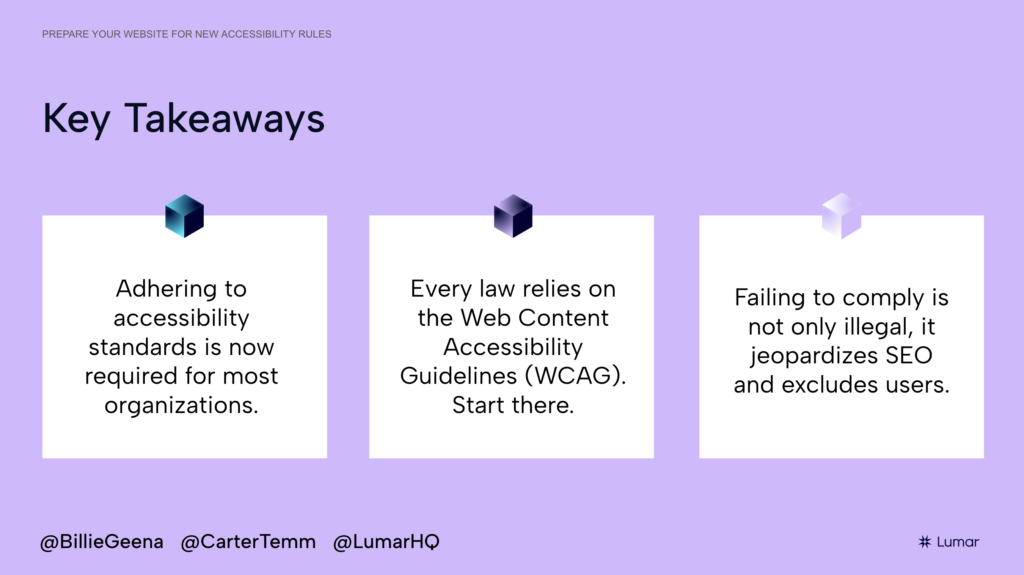
How users with accessibility needs navigate the web
In thinking about the numerous ways people with accessibility needs interact with websites today, Billie Geena Hyde of Uptake Agency asks us:
- Have you ever tried navigating your website without a mouse?
- Have you ever tried navigating your website using a screen reader?
- Have you ever tried navigating your website using a text-only browser?
It can become obvious pretty quickly where the pain points are.
“These are really big things you need to try,” Hyde says, “It will give you a lot of understanding of how different users with different access needs will navigate your site, understand the content, and potentially buy from you.”
Hyde also notes that 18.9% of the total American population uses the internet and has a disability.
“It’s a large amount of people that we need to cater to [with website accessibility],” she says, “It’s massively important that we create an accessible website and a great user experience.”
Better SEO through accessibility
Often, it can be difficult for organizations to determine who in their team should ‘own’ website accessibility projects. Hyde believes SEO professionals are in a great position to think about and tackle web accessibility projects. (Note: You can read more on that in Lumar host Matt Hill’s article, “Why SEOs Need to Understand Website Accessibility”.)

Tips to get started with web accessibility improvements
For those getting started with digital accessibility, Hyde outlines several recommendations to better understand how your website works for people who use assistive technologies:
“Tabbing around” your site
Try using the tab keys on your keyboard to move from link to link on a webpage and use ‘enter’ to click through them.
“It’s really important that you have a clear navigation that follows a logical order,” Hyde says.
She then recommends turning off JavaScript on the page and trying the ‘tab-through’ exercise again.
“Try accessing everything in your menu, in your footer, and get from A to B. You want to navigate as many different templates as possible doing this,” Hyde suggests.
She notes that accessible navigation issues tied to JavaScript are common.
Having a staging site where you can test the entire user journey from site entry to check-out (for a retail site) can be extremely enlightening when trying to understand how visitors might be blocked from becoming customers on an inaccessible website.
Accessible linking
Links present another area where it’s common to find accessibility issues, according to Hyde. Here she offers several suggestions for quick accessibility wins associated with links:
- Links should be clearly distinguishable from other text on a page.
- The tab order should follow the order of links on your page.
- Top-level navigation should be the same on all pages. (This is particularly relevant to SaaS sites or other domains where the experience may be different for logged-in vs. logged-out users.)
Other first-line website accessibility checks
- Make sure your page has a properly defined (and implemented) header, body, and footer section to ensure it is easy for all users to understand the format of the page.
- Make sure content is viewable, navigable, and functional at 200% zoom.
- Make sure that, while ‘zoomed in’ to a page, the page only scrolls in one direction.
Content considerations for accessibility
Hyde notes that accessibility is not just about technical fixes on your website. Organizations need to consider their provision of accessible products and services.
Consider what other barriers exist when those with disabilities are trying to access things like transport, education, or the job market.
A good example is if your organization has a physical, brick-and-mortar location. You may want to create content that explains aspects of your physical location, such as:
- Is your business only accessible by stairs?
- Do you offer disabled toilets and facilities?
- Do you offer quiet hours for shopping?
- What assistive technology is in place at your physical location? (Headphone jacks, etc.)
- What staff are available to help? (This is particularly important for travel services.)
Final thoughts on web accessibility compliance
Lumar solutions engineer Matt Hill sums up the discussion with the following four takeaways about web accessibility:
- It’s the right thing to do.
- It’s a legal requirement.
- Accessibility isn’t about being perfect, it’s about making progress.
- It’s everyone’s responsibility.
More web accessibility resources
- Explore website accessibility metrics in the Lumar platform
- On-Demand Webinar: Fix & Prevent Common Website Accessibility Issues
- On-Demand Webinar: Lumar Website Accessibility Audits in Action
- Website Intelligence Academy: Accessibility Topics
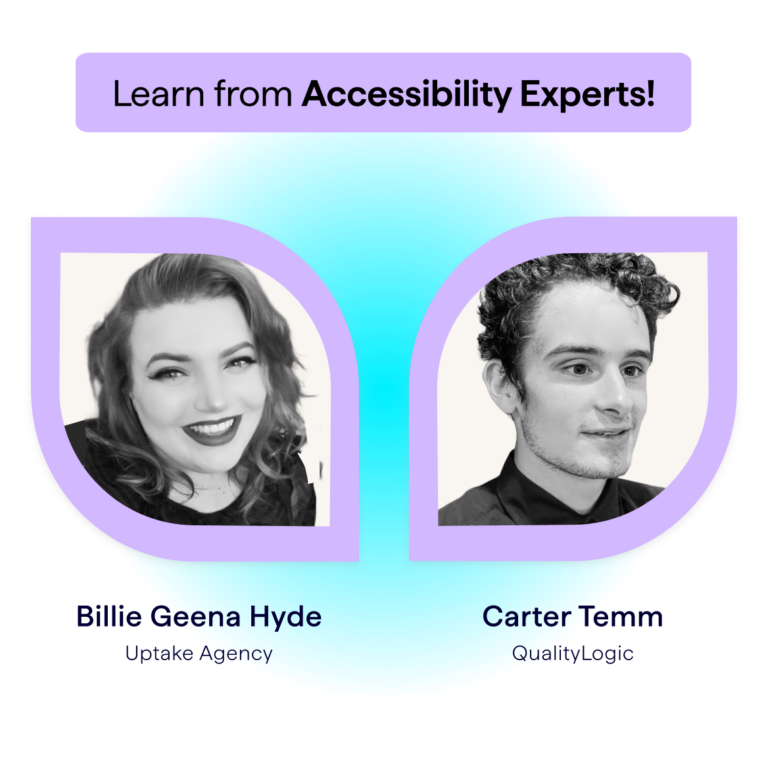
Learn from A11y Experts
- Billie Geena Hyde, Accessibility Advocate, SEO Consultant, & Founder, Uptake Agency
- Carter Temm, Accessibility Consultant, QualityLogic
- Host – Matt Hill, Solutions Engineer, Lumar
Don’t miss the next Lumar webinar!
Sign up for our newsletter below to get alerted about upcoming webinars, or give us a follow on LinkedIn or Twitter/X to stay up-to-date with all the latest news in website optimization.
Want even more on-demand SEO webinars? Explore the full library of Lumar SEO webinar content.




